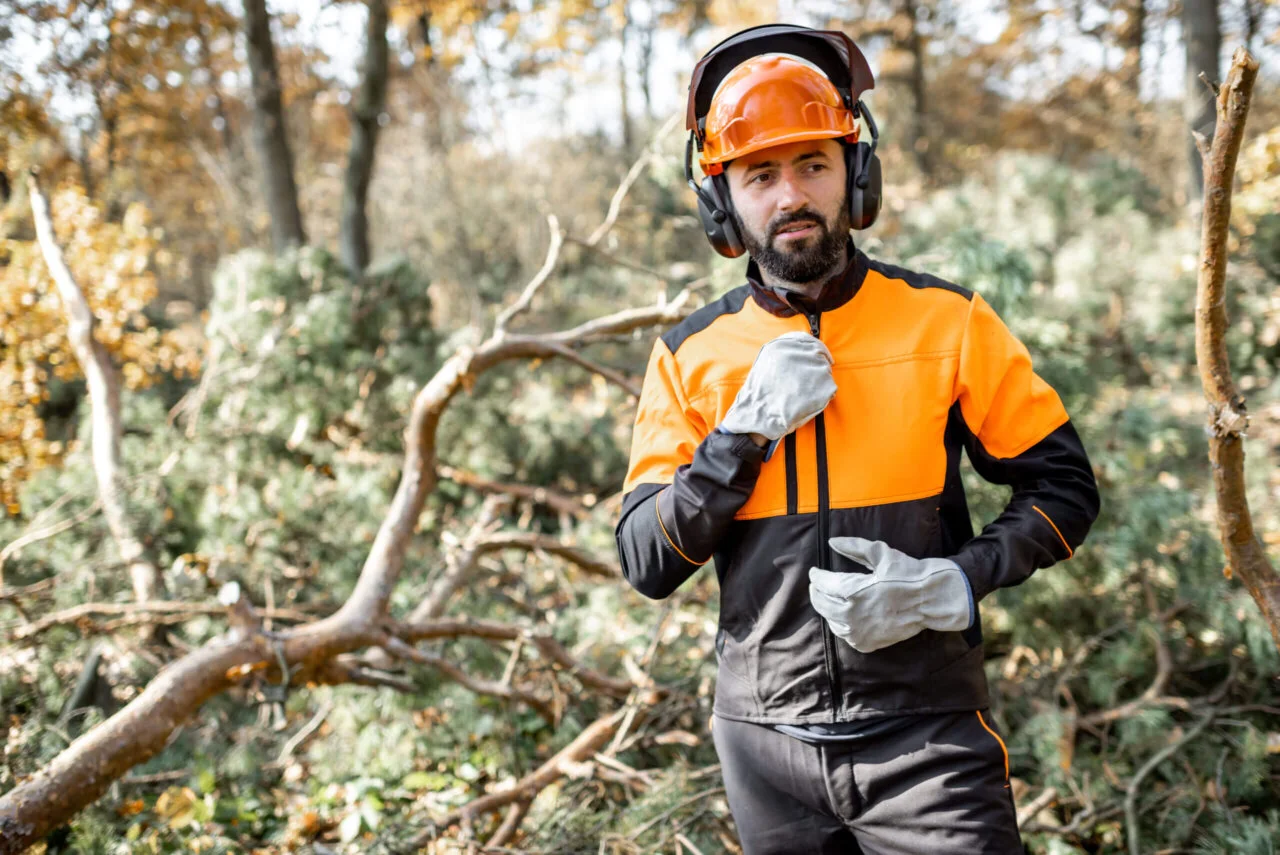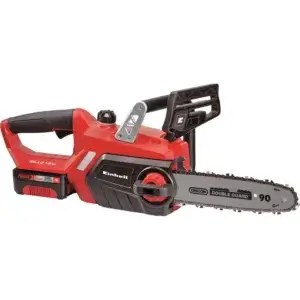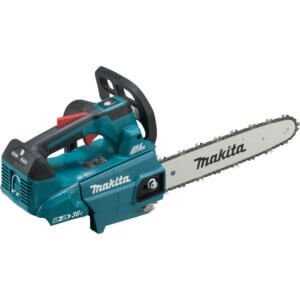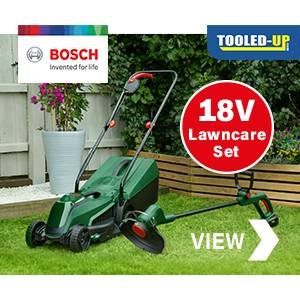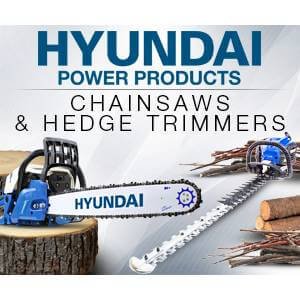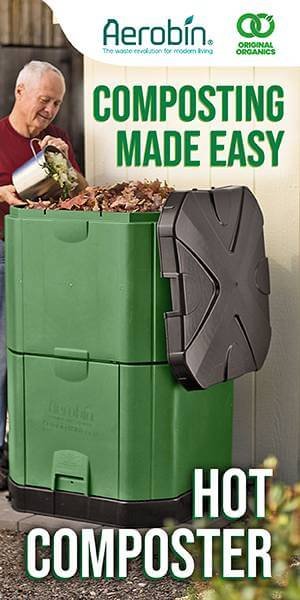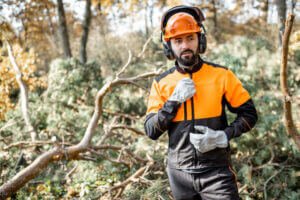Chainsaws can be powerful tools for any lumberjack, but without the right safety features, they can also pose significant risks. This guide highlights essential chainsaw safety features, including must-have components like the guide bar and sprocket. Readers will learn about advanced safety innovations, the importance of protective gear such as chaps and earmuffs, and best maintenance practices. By understanding these safety measures, users can significantly reduce the risk of accidents and ensure safe operation, making their chainsaw experience both efficient and secure.
Key Takeaways
- Safe chainsaw operation requires understanding and using essential safety features effectively
- Regular maintenance checks enhance the functionality of safety components and prevent accidents
- Being prepared for emergencies with a first aid kit is essential for chainsaw users
- Environmental awareness helps identify hazards that can compromise safety during operation
- Proper protective gear significantly reduces the risk of injuries when using a chainsaw
Understanding Chainsaw Safety Features
Safe chainsaw operation is crucial to prevent injuries and accidents. Common risks, such as loss of control and blade contact, can be mitigated through essential safety features like trigger locks and inertia brakes. Additionally, legal requirements and industry standards guide the design of these features to enhance user protection while working. The following sections will delve into specific safety features such as handling wear and the use of leather protective gear.
The Importance of Safe Chainsaw Operation
Safe chainsaw operation is paramount to prevent accidents and injuries. The rapid movement of the chain, combined with a mix of sawdust and debris, can create hazardous conditions. Operators must maintain a firm grip on the saw, ensuring their fingers remain clear of the blade at all times to avoid severe cuts and injuries. Implementing safety features can significantly reduce the risks associated with handling such powerful equipment.
Understanding how safety mechanisms work is vital for effective chainsaw operation. For instance, components like rivets and nuts are not just structural but play a key role in keeping the chainsaw intact during use. A chainsaw with properly secured parts can minimize vibrations and prevent the tool from shifting unexpectedly, allowing operators to focus on their task while knowing they have reliable equipment. Regular maintenance and checks ensure that these safety features function correctly, providing peace of mind.
Accidents can still happen, regardless of precautions. Thus, having first aid essentials on hand is crucial for every chainsaw user. A well-stocked first aid kit, along with knowledge of basic first aid procedures, can be invaluable in case of emergencies. Operators should remember that while safety features help reduce risk, being prepared for any situation reinforces the importance of safety in chainsaw operation.
Common Risks and How Safety Features Mitigate Them
Operating a power tool like a chainsaw comes with inherent risks, including loss of control and blade contact. Equipments such as chain brakes act as crucial chainsaw safety features that can prevent the chain from rotating if the saw kicks back, significantly reducing the likelihood of injury. By understanding these features, users can make informed choices when purchasing a chainsaw and use it more confidently.
Another common risk is the potential for a chainsaw to become dislodged or slip during operation, leading to accidental injuries. Safety features such as an integrated catcher can minimise this risk by stopping the chain and providing additional traction when needed. A chainsaw user should ensure these features are operational before using the tool, as they are essential for safe handling.
Even with all the safety features in place, accidents may still occur, making a first aid kit an indispensable companion for any chainsaw user. Basic knowledge of first aid, combined with readily available medical supplies, can prepare operators to respond swiftly to emergencies. This preparedness enhances overall safety and ensures that operators can manage risks effectively in the event of an unforeseen incident while using their chainsaw.
Legal Requirements and Industry Standards
Legal requirements for chainsaw safety ensure that all devices on the market meet specific standards that protect users from risks associated with operation. For instance, chainsaws are expected to have adequate noise reduction features and a properly functioning exhaust system, which is essential for maintaining a safer working environment. Complying with these regulations helps users select chainsaws that prioritise their safety and health, thus significantly reducing risks.
Industry standards also dictate that chainsaws must include safety features like a lever to activate the chain brake, which halts the chain’s movement during accidental kickback. These features are not only designed to protect the operator but also to enhance overall handling. Buyers should look for products that clearly indicate compliance with local safety regulations to ensure proper protection while using the equipment.
Moreover, ongoing testing and regulation updates mean manufacturers must continuously innovate to incorporate the latest safety features in chainsaws. By choosing a chainsaw that meets these legal frameworks, users can confirm that their tool is equipped to handle limb-cutting tasks while adhering to established safety norms. This active approach to safety not only guards against immediate hazards but also promotes responsible chainsaw use in the long term:
- Chainsaw devices must adhere to noise reduction laws.
- Inclusion of a properly functioning exhaust system is necessary.
- Safety levers must be present to prevent accidental activation.
- Staying informed about regulatory changes is crucial for buyers.
Essential Safety Features to Consider When Buying a Chainsaw
When selecting a chainsaw, several essential safety features must be considered to enhance user protection and promote operational safety. Key features include chain brake systems, which prevent the chain from rotating during kickback, and low-kickback chains that help reduce risk. Additionally, throttle lock mechanisms ensure safe handling, while chain catchers provide added security against unintended chain release. Anti-vibration handles improve control, making the machine easier to manage. Understanding these features is vital for ensuring compliance with standards set by the Occupational Safety and Health Administration and protecting operators from hazards like carbon monoxide emissions.
Chain Brake Systems and Their Benefits
Chain brake systems are an essential safety feature in modern chainsaws, designed to stop the saw chain almost immediately during a kickback situation. This mechanism significantly decreases the risk of accidents by ensuring the operator retains better control, particularly when faced with unexpected movements. By halting the saw chain’s rotation quickly, the chain brake reduces the potential for severe injuries, giving users added peace of mind while working.
Effective chain brake systems are often equipped with a depth gauge that helps maintain proper chain tension and alignment. This feature is crucial for optimal performance and safety, as it prevents excessive pressure on the saw chain and reduces wear and tear over time. Regular maintenance, including the appropriate use of lubricants and ensuring the tank is adequately filled, contributes to the longevity of the chain brake system and ultimately enhances operational safety.
Investing in a chainsaw with a reliable chain brake system aligns with both user safety and the effectiveness of cutting tasks. For instance, operators can efficiently manage the pressure applied to the chainsaw while cutting without fearing sudden kicks or slips. Understanding how the chain brake interacts with other components, like the lubricant distribution system, is vital for achieving consistent performance and ensuring safety standards are met during chainsaw operation.
Low-Kickback Chains and Guide Bars
Low-kickback chains are an essential feature to consider when purchasing a chainsaw, as they significantly reduce the risk of kickback incidents. Kickback occurs when the saw chain suddenly jerks back towards the operator, which can lead to serious injuries. Chains designed with lower kickback tendencies help operators maintain better control over the equipment, ensuring safer handling during use and providing peace of mind while working.
Another critical aspect to look for is the guide bar, which plays a vital role in the stability and accuracy of cuts. A well-designed guide bar, especially one that is paired with a low-kickback chain, can enhance the cutting experience. Operators should pay attention to the dimensions and compatibility of the guide bar with the chainsaw to ensure optimal performance and safety during operation, minimising the chance of accidents.
Regular maintenance is key to ensuring that both the low-kickback chain and guide bar function effectively. Keeping the chain well-oiled and free from debris helps maintain its integrity and performance during use. Additionally, users should routinely check the brake system to ensure it is functioning properly, as this interlock system works hand-in-hand with these safety features, reinforcing the overall stability and safety of the chainsaw while in operation.
Throttle Lock Mechanisms to Prevent Accidents
Throttle lock mechanisms are a critical safety feature to consider when purchasing a chainsaw. This feature prevents the throttle from accidentally engaging when the operator releases their grip, which can occur due to fatigue or momentary distractions. Ensuring that the chainsaw has a reliable thumb throttle lock contributes to safer operation, reducing the risk of unintentional activation while using gasoline-powered models.
For instance, a chainsaw with a well-designed throttle lock allows operators to rest their hands while still maintaining control over the tool. This feature is especially important during prolonged use, as constant grip can lead to fatigue and accidental slips. Moreover, operators often wear proper protective gear, including a hard hat, to guard against potential hazards while working, making a dependable throttle lock even more essential for safety.
In addition to preventing accidents during operation, throttle lock mechanisms enhance overall user confidence. Operators can focus on their cutting tasks without the worry of sudden chain engagement. When assessing a chainsaw’s safety features, it is vital to check that the throttle lock is easy to engage and disengage, ensuring seamless operation and consistent performance throughout use:
- Prevents accidental throttle engagement.
- Reduces operator fatigue during prolonged use.
- Enhances user confidence in handling the tool.
Chain Catchers and Their Role in User Protection
Chain catchers serve a critical role in enhancing chainsaw safety by preventing the saw chain from being released unexpectedly during operation. When a chain breaks or slips off, a properly functioning chain catcher can catch it and reduce the risk of serious injury to the operator. This protective feature is essential for maintaining safe handling, especially in situations where the operator may be focused on cutting and not fully aware of the potential hazards.
In addition to traditional safety features, it’s important to consider how other components, such as the air filter and spark arrestor, work synergistically with the chain catcher. A clean air filter helps maintain engine performance, while a functioning spark arrestor prevents fire hazards when using a chainsaw in dry conditions. Together, these elements contribute not only to user protection but also to optimised equipment efficiency.
Ultimately, the presence of a chain catcher is just one aspect of a well-designed chainsaw system. Operators should ensure that other features, including a responsive clutch mechanism and shoulder straps for stabilisation during use, are also evaluated. Properly assessing these safety components enables a safer and more confident chainsaw experience for users. Key considerations should include:
- Ensuring the chain catcher is fully operational before use.
- Regular maintenance of the air filter for optimal engine function.
- Checking the spark arrestor to prevent fire risks.
- Evaluating the effectiveness of the clutch mechanism during operation.
- Utilising shoulder straps for added control and stability while cutting.
Anti-Vibration Handles for Better Control
Anti-vibration handles are a pivotal safety feature in chainsaws, designed to enhance user control during operation. These handles reduce vibrations generated by the engine and the cutting process, promoting a more stable and comfortable grip. Operators who frequently use a chainsaw appreciate these handles, as excessive vibration can lead to fatigue and decrease precision, particularly when managing a throttle response or navigating around the nose of the saw.
By effectively minimising vibration, these handles allow users to maintain better control of the chainsaw, especially during extended work sessions. This improved control is essential when performing tasks in challenging conditions, ensuring the operator can make precise cuts without compromising safety. Additionally, using protective gear such as chainsaw trousers can further enhance safety, complementing the benefits provided by anti-vibration technology.
In an emergency scenario, the presence of anti-vibration handles can make a significant difference. When operators are equipped with reliable handles, they are less likely to fumble or lose grip on the tool during critical moments. By combining this safety feature with other components like a centrifugal clutch, which helps manage power and speed, users experience a higher level of confidence while operating the chainsaw, ultimately contributing to a safer working environment.
Advanced Safety Innovations in Modern Chainsaws
Modern chainsaws incorporate advanced safety innovations that significantly enhance user protection. Automatic chain oiling systems ensure optimal lubrication, helping to reduce debris and wear on the carburetor and chain. Safety start technology prevents unintended starts, while inertia-activated chain brakes provide immediate response to potential injury risks. Protective shields and guards further complement personal protective equipment, creating a safer working environment for operators.
Automatic Chain Oiling Systems
Automatic chain oiling systems are a crucial safety feature in modern chainsaws, designed to ensure the saw chain operates smoothly and effectively. By delivering a consistent supply of lubricant, these systems help reduce friction and wear during use, which significantly lowers the risk of accidents related to overheating. A well-lubricated chain cuts through lumber more efficiently, allowing the operator to focus on technique and control rather than maintenance issues.
Incorporating an automatic lubrication system into a chainsaw not only enhances performance but also supports a comprehensive risk assessment approach. Operators can rest assured that their tool is functioning optimally, which reduces the chances of sudden failures that could lead to serious injury. This feature also encourages better working practices, as it allows users to maintain an appropriate angle when cutting, ensuring stability and safety throughout the task.
Safety Start Technology to Prevent Unintended Starts
Safety start technology is a critical advancement in chainsaw design, aimed at eliminating the hazard of unintended starts. This feature requires the operator to engage specific combinations of the handle and bumper before the chainsaw can be activated, ensuring that the machine only starts when properly held. For professionals working in environments governed by occupational safety and health regulations, this technology is essential for reducing risks associated with accidental activation.
Chainsaws equipped with safety start technology contribute significantly to user protection by preventing dangerous situations that could arise from an unexpected start. This is especially vital for heavier models where the weight can make handling more challenging. Operators can work with greater confidence, knowing that the chainsaw will only engage when intended, thus safeguarding against unforeseen accidents.
To ensure optimal functionality, users should familiarise themselves with the safety start mechanism specific to their chainsaw model, as procedures may vary. Regular maintenance checks can enhance the performance of these safety features, further reinforcing user protection. Incorporating such technology not only fosters a safer working environment but also aligns with best practices in chainsaw operation:
- Understand the safety start procedure for your specific chainsaw model.
- Regularly check the handle and bumper mechanisms for any wear.
- Follow occupational safety guidelines when operating power tools.
Inertia-Activated Chain Brakes
Inertia-activated chain brakes are an advanced safety feature that enhances chainsaw operation by immediately halting the chain during kickback situations. This mechanism senses sudden momentum changes, allowing the brake to engage automatically, which helps prevent injuries related to the saw chain unexpectedly moving towards the operator. Such a feature is crucial when cutting tasks involve dense wood or firewood, where control is essential for safe operation.
These brakes work effectively in tandem with other safety elements, such as a well-maintained fuel tank and lubrication systems, which reduce friction during operation. By minimising vibration caused by the chainsaw’s engine and cutting process, inertia-activated chain brakes contribute to a more stable cutting experience. This stability allows users to focus on their tasks without worrying about sudden jerks or losses of control.
Protective Shields and Guards
Protective shields and guards are vital components in the design of modern chainsaws, serving the primary purpose of minimising risks associated with flying debris and harmful energy. These features not only shield the operator’s legs and eyes from potential hazards but also enhance overall safety during operation. By incorporating sturdy materials and designs, manufacturers ensure that these protective elements withstand the rigours of cutting tasks while maintaining visibility and accessibility for the user.
The implementation of shields and guards is particularly beneficial in home and professional settings where unexpected events can occur. For instance, when using a wedge to guide the cutting direction, shields absorb the energy from kickbacks or splintering wood, greatly reducing the likelihood of injury. Users should always check that any screws securing these safety features are tightly fastened, as loose components can compromise the effectiveness of the shields and lead to accidents.
For operators who regularly engage in heavy-duty cutting, wearing additional protective gear alongside the chainsaw’s built-in shields is advisable. Eye protection is crucial, especially when operating in cluttered environments where debris is more likely to fly towards the face. By combining protective shields and eye gear, users can greatly enhance their safety, ensuring that they can focus on their cutting tasks without the added worry of potential injuries from unexpected hazards.
Choosing the Right Protective Gear for Chainsaw Use

Proper protective gear is essential for chainsaw users to ensure safety during operation. This includes choosing the right protective clothing and equipment, selecting appropriate helmets and eye protection, and considering hearing protection options. Additionally, safety boots and gloves improve grip and prevent injuries. Each aspect contributes to a safer working environment and enhances overall user protection when handling chainsaws.
Essential Protective Clothing and Equipment
Choosing the right protective clothing and equipment is vital for anyone using a chainsaw. Operators should invest in chainsaw trousers made from durable, cut-resistant materials, which provide vital protection against potential accidents. These trousers often feature reinforced areas to shield the legs from chain contact, significantly reducing the risk of serious injuries.
In addition to trousers, a high-quality helmet with a face shield is crucial for protecting the head and eyes from flying debris. A dependable helmet should fit securely and provide clear visibility while effectively guarding against impacts. Integrating ear protection is also essential, as chainsaws can generate high noise levels that may lead to hearing damage over time.
Footwear plays a significant role in chainsaw safety, and operators should choose sturdy, slip-resistant safety boots designed for outdoor work. These boots often have reinforced toes to protect against falling objects and sharp tools. By prioritising protective gear, chainsaw users can create a safer work environment, allowing them to focus on their tasks with confidence and peace of mind.
Selecting Proper Helmets and Eye Protection
Selecting the appropriate helmets and eye protection is crucial for anyone operating a chainsaw. A well-fitted helmet with a face shield protects the user from flying debris, branches, and other hazards that can arise during cutting tasks. When choosing a helmet, look for models that meet industry safety standards and provide clear visibility, comfort, and adjustability.
In addition to helmets, safety goggles or visors should be worn to shield the eyes from dust and small particles. Operators should select eye protection that meets relevant safety certifications, ensuring it provides adequate coverage and is comfortable for extended use. Investing in high-quality eye protection can help prevent serious injuries, allowing users to focus on their cutting tasks without distraction.
To summarise, choosing proper helmets and eye protection involves ensuring compliance with safety standards, achieving a comfortable fit, and considering visibility and practicality. Maintaining protective gear should also be a part of regular safety checks to ensure ongoing protection during chainsaw operation. Key considerations include:
- Choosing a helmet with a reliable face shield that meets safety standards.
- Ensuring eye protection is comfortable and provides full coverage.
- Regularly inspecting gear for signs of wear or damage.
Hearing Protection Options
Hearing protection is an essential component of personal safety gear for chainsaw operators, as prolonged exposure to the loud noise generated by chainsaws can lead to hearing damage. Ear muffs offer substantial noise reduction and typically feature padded ear cups for comfort during extended use. Users must select models that meet relevant noise reduction ratings, ensuring adequate protection while maintaining the ability to hear essential sounds from the surroundings.
In addition to ear muffs, foam earplugs provide a lower-profile option for those who prefer a more discreet form of hearing protection. These plugs effectively block out harmful noise levels and can be worn comfortably under helmets or other headgear. Choosing high-quality, properly fitting earplugs is crucial to ensure they provide optimal protection against chainsaw noise without compromising comfort.
Operators should also consider the importance of complementing hearing protection with other safety equipment, as a holistic approach to safety enhances overall effectiveness. For instance, using ear protection in conjunction with a suitable helmet can guard against both noise and flying debris, creating a safer working environment. Awareness of the specific noise levels produced by different chainsaws can guide users in selecting the right hearing protection for their needs, ensuring they remain both productive and safe during operation.
Safety Boots and Gloves for Enhanced Grip
Safety boots and gloves play a critical role in a chainsaw operator’s protection. These items are essential not only for maintaining grip but also for ensuring that the operator’s feet and hands are safeguarded against potential injuries. Opting for chainsaw-specific safety boots, which feature reinforced toes and slip-resistant soles, can significantly enhance stability during operation on uneven terrains, reducing the risk of accidents.
When selecting gloves, operators should look for those made from high-quality, cut-resistant materials. Gloves engineered for chainsaw use often provide superior grip while allowing for a reasonable amount of dexterity. This balance ensures that users can handle the chainsaw with confidence, reducing the chance of slips that could lead to dangerous injuries.
Furthermore, wearing proper safety gear boosts overall user comfort during long cutting sessions. Investing in boots that offer adequate arch support and gloves that fit well helps prevent fatigue, allowing operators to maintain focus on their tasks. Ultimately, prioritising the right safety boots and gloves can greatly enhance control, ensuring a safer and more effective chainsaw operation experience.
Maintenance Practices to Keep Safety Features Effective
Maintaining chainsaw safety features is essential for effective operation and injury prevention. Regular inspection of safety components ensures they function correctly, while proper chain sharpening and tensioning enhances cutting efficiency. Cleaning and lubricating the chainsaw helps prevent wear, and knowing when to consult a professional technician keeps the equipment in optimal condition. Each of these practices plays a crucial role in upholding safety standards.
Regular Inspection of Safety Components
Regular inspection of safety components is fundamental for maintaining the performance and safety of a chainsaw. Users should make it a habit to check critical features such as the chain brake, throttle lock, and chain catcher before each use. Ensuring these components are operational helps prevent unexpected failures that could lead to accidents during operation, allowing users to work confidently with their equipment.
During inspections, it is advisable to look for visible signs of wear or damage to safety features. For instance, the chain brake should engage smoothly without sticking, and the throttle lock should function without lag. If any component does not operate as expected, it is essential to address the issue immediately to ensure that the chainsaw remains a safe tool for cutting tasks.
Proper Chain Sharpening and Tensioning
Proper chain sharpening is crucial for maintaining the efficiency and safety of a chainsaw. A dull chain can lead to increased friction, making the saw work harder and potentially causing overheating. Regularly sharpening the chain not only enhances cutting performance but also reduces the risk of kickback, allowing operators to maintain better control of the equipment during use.
Equally important is ensuring that the chain is correctly tensioned. A loose chain can detach during operation and pose a significant safety hazard, while a chain that is too tight can lead to unnecessary wear on the sprockets and bar. Operators should regularly check the tension by pulling the chain away from the guide bar; it should easily lift away but not come off completely. This practice helps maintain safety features and prolongs the lifespan of the chainsaw.
Cleaning and Lubricating Your Chainsaw
Cleaning and lubricating a chainsaw is essential for keeping its safety features effective and ensuring optimal performance. Regular cleaning helps to remove debris, sawdust, and resin that can accumulate on the chainsaw, which can cause wear and affect cutting efficiency. By taking the time to clean the components, operators can spot potential issues early on, thus maintaining a safer working environment.
Lubrication is equally important, as it reduces friction between moving parts, such as the chain and bar. A well-lubricated chainsaw operates smoothly and efficiently, lowering the risk of overheating and mechanical failure. Operators should use the manufacturer’s recommended oil for chain lubrication, applying it generously before each use to extend the lifespan of the equipment and ensure it performs reliably.
By incorporating regular cleaning and lubrication into the chainsaw maintenance routine, operators can enhance the effectiveness of all safety features. This vigilant practice not only prolongs the life of the tool but also fosters confidence when using the chainsaw, knowing it is in good working order, ultimately contributing to a safer cutting experience:
| Maintenance Task | Purpose | Frequency |
|---|---|---|
| Clean Chainsaw Components | Removes debris and prevents wear | After each use |
| Lubricate Chain | Reduces friction and prevents heating | Before each use |
| Inspect Safety Features | Ensures all components function correctly | Weekly or after heavy use |
When to Consult a Professional Technician
Consulting a professional technician becomes essential when a chainsaw exhibits persistent operational issues that basic maintenance cannot resolve. For example, if the chain does not stop promptly after engaging the brake, this may indicate a malfunction that requires expert assessment. Regular use can wear components down, and a technician can accurately diagnose hidden problems, ensuring safe operation.
Operators should also seek professional help if they notice unusual vibrations or hear strange noises during use, as these could signal deeper mechanical problems. A well-functioning chainsaw should operate smoothly, and any abnormalities might compromise safety features. By consulting a professional, users can address potential risks and prevent accidents that could occur from ignoring these warning signs.
Tips for Safe Operation and Handling
Before operating a chainsaw, it is crucial to conduct pre-use safety checks and preparations, ensuring the equipment is in good condition. Proper techniques for handling and cutting are essential to minimise risks. Additionally, recognising and avoiding hazardous situations contributes to safer operation. Including emergency procedures and first aid measures in planning is equally important, along with maintaining environmental awareness and secure working areas. Each of these aspects significantly enhances user protection while working with chainsaws.
Pre-Use Safety Checks and Preparations
Before using a chainsaw, it is essential to conduct thorough pre-use safety checks. This includes inspecting critical features such as the chain brake and throttle lock to ensure they function correctly. A quick visual assessment can reveal any visible signs of wear that may compromise safety during operation.
Operators should also check the chain tension and sharpness, as a dull or loose chain can lead to unsafe handling and increased risk of accidents. Ensuring that the chain is properly lubricated will enhance performance and reduce the likelihood of overheating or mechanical failure, ultimately safeguarding the user during cutting tasks.
Preparation extends beyond just inspecting the chainsaw; it includes assessing the work environment too. Clearing the area of potential hazards, such as loose branches or debris, ensures a safe workspace. Being mindful of surroundings and positioning can significantly enhance overall safety, empowering operators to focus on their tasks with confidence.
Correct Techniques for Handling and Cutting
Correct techniques for handling a chainsaw are essential for ensuring safety and effectiveness during operation. Operators should always maintain a firm grip on the handle with both hands, positioning their fingers away from the throttle and chain to prevent accidental activation. Proper stance and body positioning, such as keeping feet shoulder-width apart, provide stability and better control, reducing the likelihood of slips or falls.
When cutting, it’s crucial to adopt the right posture to maintain balance and avoid fatigue. The operator should keep the chainsaw at waist height and use the correct cutting angle that aligns with the intended task, whether felling trees or pruning branches. Operators should also remain mindful of their surroundings, ensuring there are no obstructions, and always cut away from their body to enhance safety.
In addition to posture and grip, employing effective cutting techniques can significantly reduce the risk of accidents. Operators should use a steady, controlled motion when cutting and avoid forcing the chainsaw through the material. Taking breaks as needed can help mitigate fatigue, allowing the user to stay focused and alert during operation, thereby promoting safer chainsaw handling and cutting practices:
| Technique | Description |
|---|---|
| Firm Grip | Always hold the chainsaw with both hands, keeping fingers clear of the throttle and chain. |
| Proper Stance | Stand with feet shoulder-width apart for better stability and control. |
| Correct Cutting Motion | Use a steady, controlled motion and cut away from the body to enhance safety. |
Recognising and Avoiding Hazardous Situations
Operators must develop a keen awareness of their surroundings when using a chainsaw to recognise hazardous situations before they escalate. For example, identifying unstable ground or overhanging branches can prevent severe injuries. Awareness of the environment allows users to respond appropriately and maintain control, ensuring safer cutting practices.
Understanding the work area is crucial in avoiding accidents. Users should always inspect the cutting site for potential risks, such as nearby people, animals, or equipment that may distract them during operation. By establishing a clear perimeter around the work area, operators can minimise accidents and concentrate on safe handling of the chainsaw.
Lastly, recognising weather conditions is essential for safe chainsaw use. Wet or windy conditions can create additional hazards, such as slippery surfaces or falling branches. Operators should postpone their tasks in adverse weather to maintain safety, ensuring that the cutting process remains efficient and controlled without compromising user protection.
Emergency Procedures and First Aid Measures
When operating a chainsaw, being prepared for emergencies is crucial. Users should establish a simple emergency plan that includes procedures for responding to injuries such as cuts or falls. This plan ensures that operators can act quickly and efficiently, reducing the potential severity of injuries that could occur during chainsaw use.
Having a well-stocked first aid kit readily available is essential for all chainsaw operators. This kit should include bandages, antiseptic wipes, and other basic medical supplies to address immediate injuries. Knowledge of basic first aid procedures, such as how to control bleeding or apply a dressing, can be highly beneficial when time is of the essence following an accident.
Furthermore, users should inform others in the vicinity about operating chainsaws and the necessary emergency procedures. This awareness can facilitate prompt assistance when needed. By having a clear plan and ensuring that peers understand it, chainsaw operators can foster a safer working environment while enhancing overall readiness for any emergencies that may arise during cutting tasks.
Environmental Awareness and Safe Working Areas
Environmental awareness is vital when operating a chainsaw, as it helps prevent accidents and promotes safe practices. Before starting any cutting tasks, operators should assess their surroundings for potential hazards such as unstable ground, overhanging branches, or nearby structures that may pose risks during operation. Being vigilant about the environment allows users to make informed decisions about where and how to work safely.
Creating a secure working area also plays a significant role in chainsaw safety. Users should aim to establish a clear perimeter around their cutting zone to keep bystanders and pets at a safe distance. This not only minimises distractions but also reduces the likelihood of unintended injuries, allowing the operator to concentrate fully on their task.
Furthermore, operators should be aware of weather conditions that can impact safety while using a chainsaw. Wet surfaces can lead to slips or falls, and strong winds may cause branches to topple unexpectedly. By monitoring the weather and delaying cutting tasks during adverse conditions, chainsaw users enhance their safety and maintain better control, helping to prevent accidents that can arise from environmental factors.
Conclusion
Essential chainsaw safety features play a crucial role in preventing accidents and ensuring user protection. Key attributes such as chain brake systems, throttle lock mechanisms, and low-kickback chains significantly enhance safety during operation. Buyers should prioritise these features when selecting a chainsaw to ensure effective handling and compliance with safety regulations. Understanding these safety innovations not only fosters confidence in using the tool but also promotes a safer working environment for all operators.
Chainsaw Buying Guide Articles
- Essential Chainsaw Buying Guide for New Homeowners
- How to Select the Perfect Pole Chainsaw for Trimming High Branches
- Unlocking the Benefits of Corded Electric Chainsaws
- Choosing the Right Chainsaw: Professional vs Consumer Models Comparison – Buying a Chainsaw Q&As
- Chainsaw Brands Comparison: Discover Your Ideal Match
Chainsaw Maintenance Articles
- Solving Chainsaw Bar Oiling Issues: A Step-by-Step Guide
- Essential Chainsaw Maintenance Tips for Enhanced Durability and Performance
- How to Select the Best Chainsaw Bar Oil for Your Needs
- Comprehensive Chainsaw Maintenance Guide for Enhanced Safety
- Step-by-Step Guide to Changing Chainsaw Spark Plugs
- Choosing the Perfect Replacement Chains for Your Chainsaw
- Step-by-Step Guide on Replacing Chainsaw Spark Plugs
- How to Select the Best Chainsaw Bar Oil for Your Needs
- Selecting the Ideal Battery for Your Electric Chainsaw: A Comprehensive Guide
- Step-by-Step Guide to Cleaning Your Chainsaw Air Filter Effectively
Chainsaw Operation Techniques Articles
- Step-by-Step Guide to Changing Chainsaw Spark Plugs
- Choosing the Perfect Replacement Chains for Your Chainsaw
- Comprehensive Guide to Proper Chainsaw Handling and Safety
- How to Select the Perfect Chainsaw Bar and Guide for Your Needs
- Effective Solutions for Chainsaw Starting Issues
- Top Tips for Boosting Fuel Efficiency in Petrol Chainsaws
Chainsaw Repair Advice Articles
- Comprehensive Guide to Fixing Chainsaw Starting Issues
- Step-by-Step Guide on Replacing Chainsaw Spark Plugs
- How to Select the Best Chainsaw Bar Oil for Your Needs
- Step-by-Step Guide to Cleaning Your Chainsaw Air Filter Effectively
- How to Replace a Chainsaw Chain: Your Comprehensive Guide
- Effective Solutions for Chainsaw Starting Issues
Chainsaw Safety Tips Articles
- Essential Chainsaw Safety Features: A Comprehensive Guide for Buyers
- Stay Safe with Chainsaw Safety Gear Essentials: Your Guide
- Chainsaw Safety: Strategies to Avoid Tree Cutting Accidents
- Essential Chainsaw Techniques for Safely Managing Tree Limbs and Branches
- Chainsaw Safety and Handling: Mastering Proper Techniques
- Comprehensive Guide to Proper Chainsaw Handling and Safety
- Essential Winter Chainsaw Storage Tips to Protect Your Equipment
- Mastering Chainsaw Safety: A Guide to Preventing Kickback
- Comprehensive Guide to Essential Chainsaw Safety Gear
- Expert Tips on Chainsaw Kickback Prevention: A Safety Guide
Chainsaw Storage Articles
- The Essential Guide to Storing Your Chainsaw Safely
- How to Select the Best Chainsaw Storage Case or Bag for Your Needs
Electric vs Petrol / Gas Chainsaws Articles
- Durability Comparison: Gas Versus Electric Chainsaws
- How to Decide on Electric Versus Gas Chainsaws: A Detailed Guide
- Reducing Your Carbon Footprint With Electric Chainsaws
- Why Opting for a Battery Powered Chainsaw Is a Smart Choice
- Selecting the Ideal Battery for Your Electric Chainsaw: A Comprehensive Guide
- Durability Comparison: Gas Versus Electric Chainsaws
- Electric vs Gas/Petrol Chainsaws: A Detailed Comparison of Power Output
- Petrol vs Electric Chainsaws: Explore the Pros and Cons
Tree Cutting Techniques Articles
- Mastering Chainsaw Cutting Angles for Precision Tree Felling
- How to Select the Perfect Chainsaw for Your Tree Cutting Needs
- Essential Safety Tips for Cutting Large Trees Using a Chainsaw
- Essential Chainsaw Techniques for Safely Managing Tree Limbs and Branches
- Chainsaw Safety: Strategies to Avoid Tree Cutting Accidents
- Chainsaw Safety and Techniques for Efficient Tree Felling
Types of Chainsaws Articles
- Why Opting for a Battery Powered Chainsaw Is a Smart Choice
- Reducing Your Carbon Footprint With Electric Chainsaws
- Uncovering the Evolution: History of Chainsaws Explained
- Unlocking the Benefits of Corded Electric Chainsaws
- Comparing Electric and Petrol Chainsaws: Key Factors to Consider
- Affordable Chainsaws for Beginners: A Buyer’s Guide
Chainsaw Accessories Articles
Articles Coming Soon

